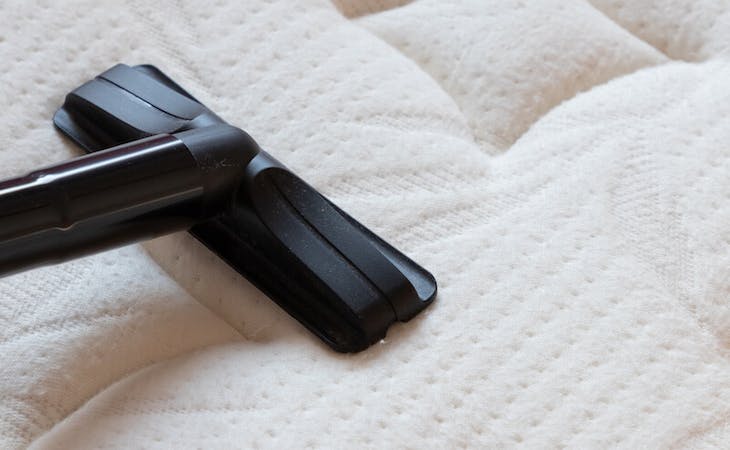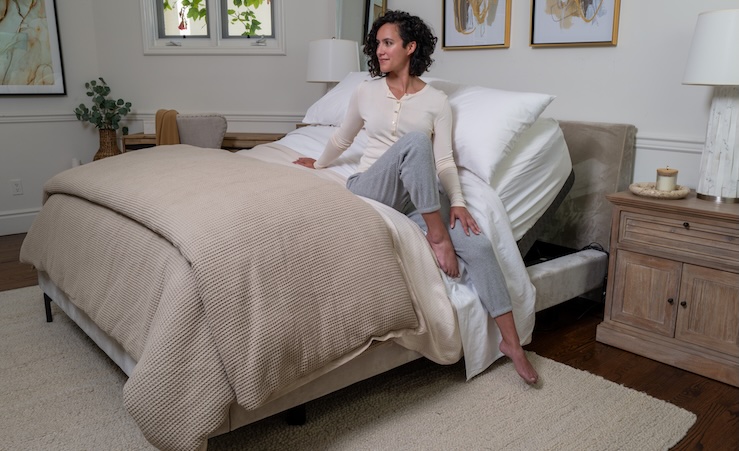Bed bugs: Just the mention of them makes our skin crawl. And if you suspect you may have an infestation, you’re only Googling them for one reason: to learn how to get rid of them.
While bed bugs aren’t known to carry or spread disease, they can still be a major nuisance that’s all too common. In fact, a survey by the National Pest Management Association found that one in five Americans has had an infestation or knows someone who has.
Wondering if you’ve got a dreaded bed bug infestation? Read on to learn everything you need to know about how to check for bed bugs and get rid of them for good.
What are bed bugs?
Bed bugs are tiny, reddish-brown insects that feed on our blood as we sleep—which is why they love to infest our beds, says Nancy Troyano, PhD, board-certified entomologist and director of operations education and training at Ehrlich Pest Control.
Because bed bugs can easily be mistaken for other common pests, knowing how to ID them and their bites is the first step toward determining whether you’re dealing with a bed bug infestation.
What they look like
Adult bed bugs are brownish-red and have six legs, no wings, and two antennae, says Derek Gaughan, owner of Bug Lord, a DIY pest control website. Bed bug eggs are pearl white and about the size of a pinprick. Young bed bugs are whiteish in color and grow into long, brown, flat bugs with oval-shaped bodies similar in size to an apple seed. After they’ve fed, they become larger and redder in color.
How they bite
Bed bugs sneak out to feed at night by piercing your skin while you’re sound asleep (we know—ugh). The process is painless and only takes about three to 10 minutes max, so most people don’t even know they’ve been bitten.
Bed bug bites can cause a variety of reactions from nothing at all to itchy, red welts that keep you up at night. Bite marks can pop up on any part of your body (sometimes in random spots or lines) and may appear within one day to two weeks, per the Centers for Disease Control & Prevention (CDC).
However, since bed bug bite marks are nearly impossible to distinguish from, say, mosquito bites, it’s best to look for other telltale signs of an infestation to be sure you’re dealing with bed bugs, says Troyano (more on that later!).
Where they come from
“No place is immune to bed bugs, as they can live anywhere with a body to feed on and in indoor temperatures between freezing and 120 degrees,” says Gaughan.
You can pick up bed bugs any place people gather, and contrary to popular opinion, they don’t mean that where you’re living is dirty or has poor sanitation—bed bugs have been found in five-star hotels and luxury resorts, per the CDC.
How they spread
Bed bugs are hitchhikers that can latch onto you or objects like a couch, throw pillow, or teddy bear. Most commonly, they’re transported to new places via your luggage, a bed bug’s one-way ticket to a new home, says Troyano.
Checking for bed bugs
To check for bed bugs, start with a thorough examination of your mattress, bedding, bed frame, and box spring, as well as nearby hiding spots like crevices in your headboard, bedside cabinets, dresser, floorboards, wall trim, picture frames, and drapery folds.
Here’s what to look for:
- Dark spots. Bed bug excrement is about as small as the tip of a pen and may bleed like a marker onto your bedding.
- Rusty, reddish stains could be crushed bed bugs or blood from a bite.
- Pale yellow eggshells and husks that appear hollow and super-tiny in size (think: one millimeter).
- A musty odor.
- And, of course, bed bugs themselves.
Bed bugs on bedding
While bed bugs often scurry away during the day, you can still scan your bed sheets and pillowcase for blood stains and specks of excrement. After that, strip your bed for a closer look.
Bed bugs on a mattress
To scan your mattress for bed bugs, zoom in on any potential hiding spots. Look for clusters of bed bugs, their excrement, and eggs in creases and seams of your mattress, around the edges, and along the joints of the bed frame.
Bed bug treatment
Because bed bugs can be notoriously difficult to treat and may take weeks or months to fully eradicate, many experts agree that you’re best off skipping do-it-yourself methods and consulting with a pest management professional for help.
That said, there are many ways that you can support the process.
Home remedies
Here, a few home remedies for bed bugs to add to your arsenal:
- Clear the area. Remove clutter (a.k.a. bed bug hiding spots) in sealed containers or bags to avoid spreading bugs and their eggs. Wash and dry bedding, linens, curtains, and clothing on high heat settings to kill them.
- Suck ’em up. Thoroughly vacuum your mattress along with any cracks and crevices in your bed, furniture, and room. Tightly seal vacuum bags and throw them away outside.
- Seal your mattress and box springs with a zippered mattress protector to keep bed bugs from moving in or out for at least a year (deprived of food, they’ll eventually die).
- Turn up the heat. Steam clean your home and furniture with a temperature of at least 130 degrees Fahrenheit.
Exterminator
If you’ve exhausted home remedies for bed bugs or know you can’t tackle an infestation on your own, contact an exterminator that is licensed, guarantees their work, and belongs to a professional or state-level association to schedule an inspection, says Gaughan.
After confirming bed bug activity, your exterminator will help clear your home of bed bugs and their eggs with a combination of heat and conventional treatment with portable heaters and approved pest control products.
Removing a mattress
While it’s understandable if you want to get an infested mattress out of your home ASAP, make sure to seal it in a mattress disposal bag to avoid spreading bugs to other parts of your home, says Gaughan. Mark it and any other furniture you can’t keep as an “infected item” when you set it out on the curb to prevent your bugs from finding another home.
Keep your bed free of critters and germs by following our best mattress-cleaning advice.




